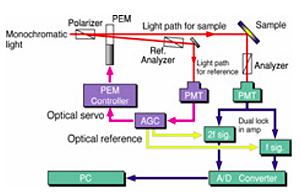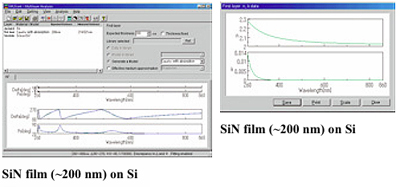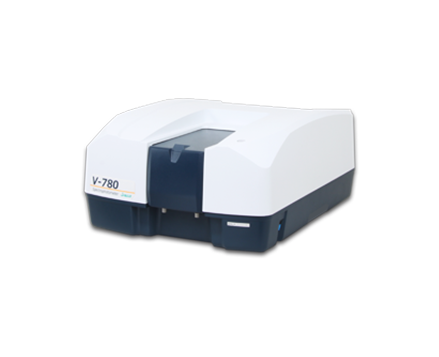Multi-Layer Film Analysis by Ellipsometry
August 22, 2022
Introduction
M-500 Spectroscopic Ellipsometer
Ellipsometry is a method for determining the refractive index and extinction coefficients of a sample by measuring the change in polarization state of surface reflected light. Film thickness and optical constants of an adsorption layer or oxide film on a substrate surface can be determined with exceptional sensitivity. Conventional interference spectroscopy utilizes light passed through separate optical paths, while ellipsometry is a form of interferometry that uses two vibrational components with the same optical path, providing measurements with excellent accuracy and sensitivity.

Results
JASCO developed a special program for calculating the film thickness and optical constants for each layer of a multi-layer film based on the ellipsometric dispersion parameters (∆, ψ)λ for the material. A multi-layer film model is developed for the sample, the film thickness and optical constants are optimized to minimize the error for the measured values.

Featured Products:
-
FT/IR-4X
-

A high sensitivity UV-Visible/NIR Spectrophotometer with InGaAs detector for wavelengths up to1600nm
V-780 UV-Visible/NIR Spectrophotometer
-
Probe Raman Spectrometer

Multi-Layer Film Analysis by Ellipsometry
Introduction
M-500 Spectroscopic Ellipsometer
Ellipsometry is a method for determining the refractive index and extinction coefficients of a sample by measuring the change in polarization state of surface reflected light. Film thickness and optical constants of an adsorption layer or oxide film on a substrate surface can be determined with exceptional sensitivity. Conventional interference spectroscopy utilizes light passed through separate optical paths, while ellipsometry is a form of interferometry that uses two vibrational components with the same optical path, providing measurements with excellent accuracy and sensitivity.

Results
JASCO developed a special program for calculating the film thickness and optical constants for each layer of a multi-layer film based on the ellipsometric dispersion parameters (∆, ψ)λ for the material. A multi-layer film model is developed for the sample, the film thickness and optical constants are optimized to minimize the error for the measured values.


 Download This Application
Download This Application